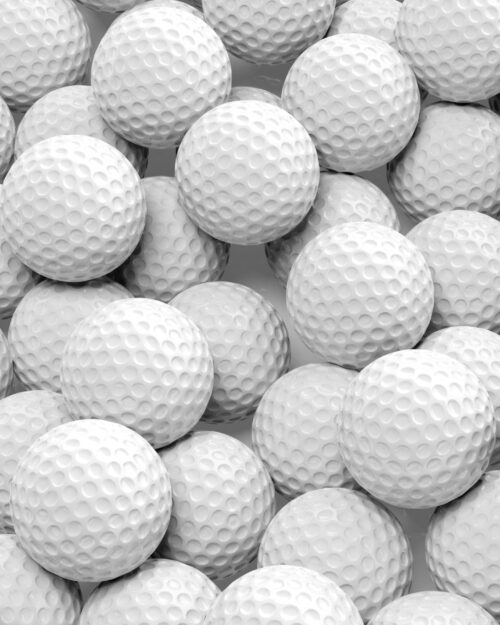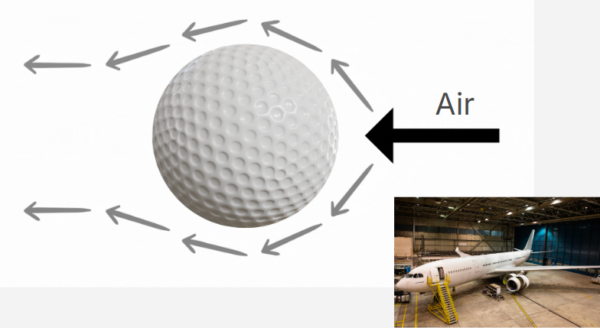June 11, 2025

By: AEOP Membership Council Member Ethan Zhou
A few years ago, the country club in my town offered a free introductory golf course to youth. Picking up a golf ball for the first time, I couldn’t help but notice the dimples on its surface. I didn’t recall seeing dimples on other balls, like soccer balls or tennis balls. Curious, I brought it up with the coach, and he said, “Because they help the ball fly easier and farther.”
Well, that was strange. If dimples help balls fly, why didn’t other sports use them? I set out to look for answers.
It turned out that the ball flight, i.e., the path the ball takes after impact, is affected by aerodynamics in addition to gravity. A smooth ball creates a laminar boundary layer, which is a thin, smooth flow of air closest to the surface. However, this flow is prone to separating from the ball early in flight, forming a large wake behind it and increasing drag. Drag slows the ball down, limiting its distance.
Dimples, I discovered, create small disruptions on the ball’s surface that transition the airflow into a turbulent boundary layer. While turbulent flow sounds chaotic, it has an advantage: it delays separation and reduces the size of the wake. This decreases drag, allowing the ball to travel farther with the same amount of effort.
According to an article from Princeton University, a dimpled golf ball hit with a driver can travel 250 yards, while a smooth golf ball struck with the same force would go only about 100 yards.
But why don’t soccer or tennis balls have dimples? In fact, their designs achieve similar aerodynamic effects in different ways. A soccer ball’s panels or a tennis ball’s fuzzy texture disrupt airflow, creating a turbulent flow. Soccer balls, for instance, have aerodynamic properties that fall somewhere between those of a smooth ball and a golf ball due to the effects of their panels.

Just as sports equipment uses aerodynamics to improve performance, engineers apply these principles when designing cars and airplanes. For example, have you ever noticed the sleek shape of a sports car? That design is no accident. Engineers create car shapes that reduce drag, making them faster and more fuel-efficient. The front of the car is rounded to cut through the air smoothly, while the back is tapered to prevent the air from swirling and creating a drag-inducing wake.
Airplanes take this even further. Their wings are shaped to maximize lift while minimizing drag by carefully controlling airflow over and under the wing. Interestingly, Formula 1 cars flip this concept on its head by using wing-like structures to generate “downforce,” pushing the car to the ground and helping it grip the track at high speeds. Without aerodynamics, sports cars would burn more fuel, and airplanes would struggle to stay in the air efficiently.
Simple questions, like why golf balls have dimples, can lead to fascinating discoveries that connect to much bigger ideas. Whether it’s testing theories with sports equipment, experimenting with paper airplanes, or observing everyday objects, anyone can start exploring the science around them. The next big breakthrough might just begin with a question as simple as, “Why?”
Find a Volunteering Opportunity
Visit our Program Volunteers page for a tool to find the best opportunity for you.
